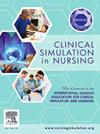Immersive and non-immersive virtual reality: A quasi-experimental study in undergraduate nursing education
IF 3.4
3区 医学
Q1 NURSING
引用次数: 0
Abstract
Background
Immersive virtual reality (VR) is considered more engaging and realistic than non-immersive VR, but direct comparisons in nursing education are limited.
Methods
This non-randomized quasi-experimental study explored undergraduate nursing students’ experiences in a home care simulation experience using immersive VR at the university (via VR headsets) or non-immersive VR at home (desktop simulation). A post-test survey incorporating qualitative feedback assessed engagement, satisfaction, confidence in learning, cognitive load, mental effort, and clinical reasoning.
Results
Engagement levels were similar across VR modalities. Immersive VR participants reported higher confidence and enthusiasm, while non-immersive VR participants reported greater mental effort and intrinsic cognitive load. Satisfaction, extraneous cognitive load, essential cognitive load, and clinical reasoning showed no significant differences between groups.
Conclusion
Both immersive and non-immersive VR supported student engagement and learning. Remote, non-immersive VR emerged as a cost-effective alternative that offers similar educational benefits while requiring fewer resources.
求助全文
约1分钟内获得全文
求助全文
来源期刊

Clinical Simulation in Nursing
NURSING-
CiteScore
5.50
自引率
15.40%
发文量
107
期刊介绍:
Clinical Simulation in Nursing is an international, peer reviewed journal published online monthly. Clinical Simulation in Nursing is the official journal of the International Nursing Association for Clinical Simulation & Learning (INACSL) and reflects its mission to advance the science of healthcare simulation.
We will review and accept articles from other health provider disciplines, if they are determined to be of interest to our readership. The journal accepts manuscripts meeting one or more of the following criteria:
Research articles and literature reviews (e.g. systematic, scoping, umbrella, integrative, etc.) about simulation
Innovative teaching/learning strategies using simulation
Articles updating guidelines, regulations, and legislative policies that impact simulation
Leadership for simulation
Simulation operations
Clinical and academic uses of simulation.
 求助内容:
求助内容: 应助结果提醒方式:
应助结果提醒方式:


